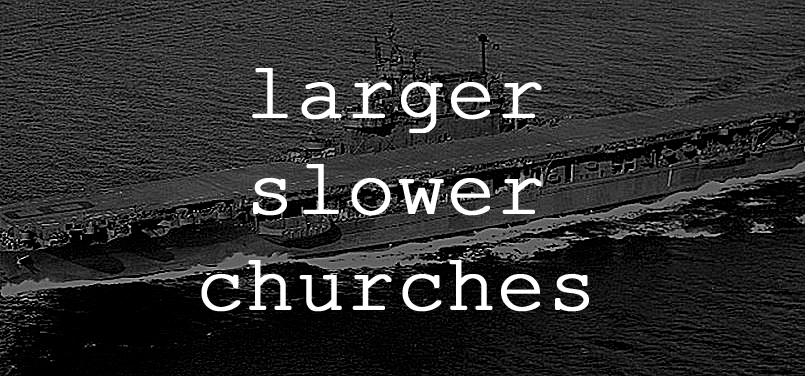Why Larger Churches Move More Slowly

Sam Rainer
I participated in the Derby Festival Marathon last Saturday with over 16,000 other runners. It poured rain. I was reminded of my insanity with every squeaky, waterlogged step. In a marathon, both the finish and the start are anticlimactic. When you finish, you’re too exhausted to enjoy the moment. (Just give me a banana and some chocolate milk!) And if you’re a runner, then you understand the anticlimactic start of big races.
Thousands line up in corrals. There is collective excitement. The Star Spangled Banner plays. Everyone is ready. The gun goes off. And nothing happens. You stand there. Waiting. Then you shuffle forward slowly. There are always a few first-time racers in the herd, and their uneasiness is palpable. It only takes one big race to know the start is anything but a sprint.
The reason for the slow start is simple: There are masses of people all trying to move at the same time. The mass advances slowly, even though everyone has the same goal, is on the same course, and moves in the same direction. The same thing happens in large churches, even healthy ones. Two people on a walk together can quickly change course. Changing the direction of two thousand is more involved.
Why do many larger churches take longer to make decisions? Because you’re asking more people to be involved, or change. I’m not a mathematician, nor am I a naval historian. So I’m not exactly sure how long it takes to turn around an aircraft carrier. Regardless, “It’s like turning an aircraft carrier” is an idiom that certainly applies to many large churches.
When comparing churches of equal heath, a larger church will typically move more slowly than a smaller church. Larger churches tend to schedule events and programs a year in advance out of necessity. Smaller churches may plan this way as well, but the scheduling does not require the same advance notice as a larger church. This issue will become even more important in the future. Big churches are getting bigger in the United States, and more and more churchgoers are concentrated in the largest churches. This trend is expected to continue, which means larger churches will have to work harder to be flexible.
I realize I’m painting with broad strokes. Some smaller churches move like molasses. And there are large, nimble churches. There are always exceptions. For example, multi-site churches are changing many views of church philosophy and leadership. A multi-site church may attract a couple thousand, but each campus may be hundreds. These campuses may be able to move more quickly than the collective whole of the church.
Though much about the future is uncertain, we know today that change agents at large churches must lead differently than at smaller churches. Here’s why.
Inspiration. In a small church, the relational ability of the lead pastor is primary. In a large church, the inspirational ability of the lead pastor is primary. Of course, every pastor needs to be both relational and inspirational. Lead pastors at large churches, however, must rely more on inspiration due to the physical limits of being relational with everyone. A pastor of a healthy smaller church with good relational skills can get people to move more quickly than the pastor of a healthy larger church relying on inspiration.
Administration. It’s one thing to organize a work day with 10 people—that can be done with a worship service announcement and a few phone calls. It’s another thing to administrate an event with 3,000 attending. Both the 10-person effort and the 3,000-person effort add value to the kingdom. I’m not making a qualitative assessment but rather a quantitative (time) assessment. The 3,000-person effort will simply take more time to administrate.
Innovation is good for large and small churches. Technology is helping churches of all sizes. But I do find a fascinating correlation between technological advances and the explosion of megachurches. As the megachurch phenomenon took off in the 1970s and 1980s, so did technology. I’m not sure if one factor drove the other, but it’s clear larger churches must leverage technology to avoid moving too slowly.
Small and large churches—there is a place for both. We need small, nimble churches to move quickly in niches. We need large, slower churches to create and sustain movements.







It’s easy for smaller churches to envy larger churches, not realizing that are negatives and positives to both. I love your last line:
“Small and large churches—there is a place for both. We need small, nimble churches to move quickly in niches. We need large, slower churches to create and sustain movements.”
Thanks Eric!